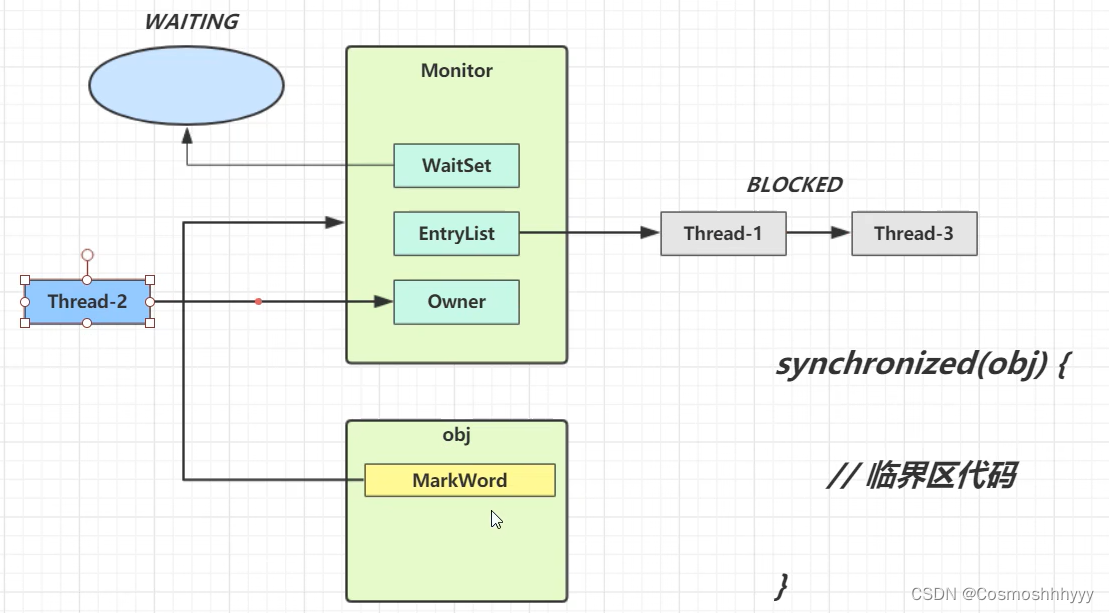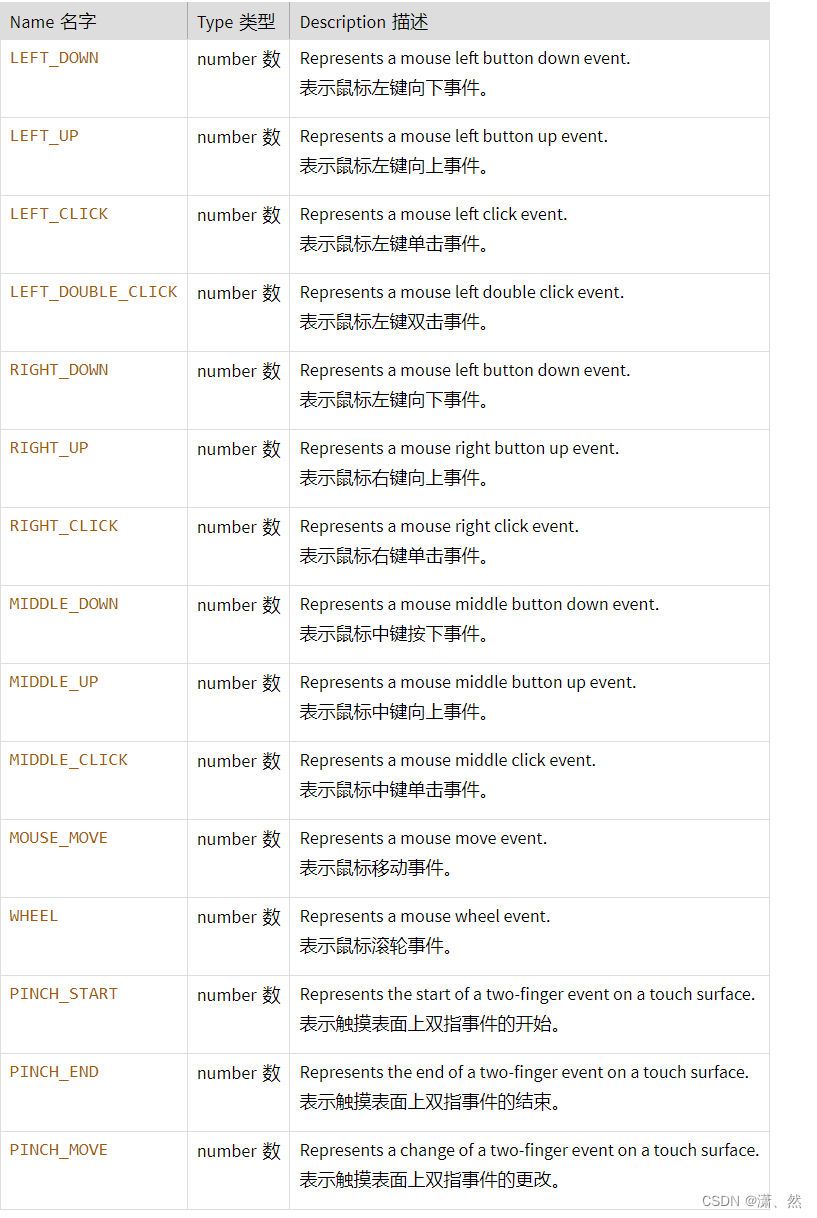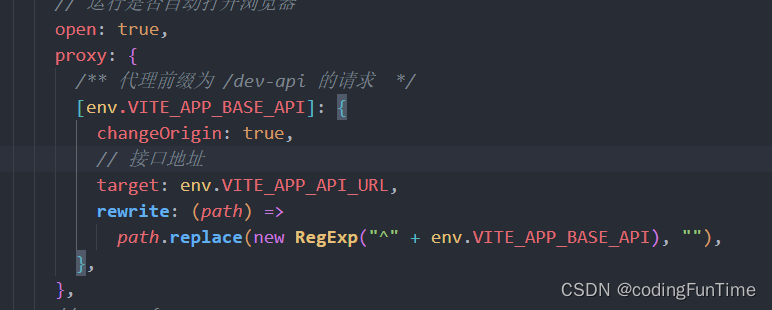文章目录
- 泛型
- 泛型的使用
- 泛型的约束
- 委托
- 委托的实例化
- 多播委托
- 委托的调用
- 内置委托类型
- 委托练习
- 泛型委托
- Lambda表达式(进阶)
- 上期习题答案
- 本期习题
泛型
泛型(Generic) 是一种规范,它允许我们使用占位符来定义类和方法,编译器会在编译时将这些占位符替换为指定的类型,利用泛型的这一特性我们可以定义通用类(泛型类),方法(泛型方法),接口(泛型接口)。
泛型:广泛的类型,一般用于传递类型
using System;
using System.Collections.Generic;
using System.Linq;
using System.Text;
using System.Threading.Tasks;namespace _01_泛型
{internal class Program{static void Main(string[] args){//泛型:广泛的类型,一般用于传递类型// <>中间的类型就是传入的泛型List<int> list = new List<int>();Dictionary<string,int> keyValuePairs = new Dictionary<string,int>();//调用的时候,通过<>将类型的实参进行传递,对应位置的泛型形参就是这个类型了Fnt<int>(1);Fnt<string>("2");Fnt<double>(1.1);Fnt<int>(1, new int[] { 1, 2 });Fnt<string>("a", new string[] { "a", "b" });Fnt<int, string>(1, "a");//泛型可以根据传入的实参,自动推断泛型的类型Fnt(1);//自动推断泛型为intFnt("2");//自动推断泛型为string}//泛型的命名规范,一般以T开头的单词命名,尽量能表示这个类型的作用,如果使用一个字母作为泛型,建议使用T//也就是说,多个字母的时候 使用TXxxx 单独的字母的时候使用T//泛型在方法中的使用//在方法名的后面添加<> 里面就相当于是类型的形参列表public static T Fnt<T>(T a, T[] arrA){return a;}public static void Fnt<TTest1,TTset2>(TTest1 a, TTset2 b ){}//接收一个任意类型的数据,转换为对应长度的数组,其中存放对应的数据public static T[] Fnts<T>(T value,int count){T[] res=new T[count];for (int i = 0; i < count; i++){res[i] = value;}return res;}}//需求: 实现一个方法 这个方法接收一个int类型,返回一个int类型,接收string 返回string...class Test{public int Fn(int value){return value;}public string Fn(string value){return value;}}public static T Fnt<T>(T a) //用泛型{return a;}}泛型的使用
using System;
using System.Collections.Generic;
using System.Linq;
using System.Text;
using System.Threading.Tasks;namespace _02_泛型的使用
{internal class Program{static void Main(string[] args){List<string> list = new List<string>();People<int, string> p1 = new People<int, string>();p1.A = 1;p1.B = "a";p1.Fn<char>('c', 3, "zifuchuan");p1.Fn('c', 3, "zifuchuan");People<int, int> p2 = new People<int, int>();}}
}//--------- 泛型类
using System;
using System.Collections.Generic;
using System.Linq;
using System.Text;
using System.Threading.Tasks;namespace _02_泛型的使用
{//给类添加泛型internal class People<TTest1,TTest2>{//定义一个属性 类型为TTest1类型public TTest1 A { get; set; }public TTest2 B { get; set; }public void Fn<T>(T a,TTest1 b,TTest2 c){}}
}//------------泛型接口
using System;
using System.Collections.Generic;
using System.Linq;
using System.Text;
using System.Threading.Tasks;namespace _02_泛型的使用
{//泛型接口internal interface IBook1<T>{T A { get; set; }T B { get; set; }List<T> C { get; set; }T[] Fn(T a);}class Book : IBook1<int>{public int A { get ; set ; }public int B { get => throw new NotImplementedException(); set => throw new NotImplementedException(); }public List<int> C { get => throw new NotImplementedException(); set => throw new NotImplementedException(); }public int[] Fn(int a){throw new NotImplementedException();}}class Book2 : IBook1<string>{public string A { get => throw new NotImplementedException(); set => throw new NotImplementedException(); }public string B { get => throw new NotImplementedException(); set => throw new NotImplementedException(); }public List<string> C { get => throw new NotImplementedException(); set => throw new NotImplementedException(); }public string[] Fn(string a){throw new NotImplementedException();}}}泛型的约束
默认泛型是没有约束的,可以传递任意类型的数据
- 声明带有泛型的方法或者类的时候,可以对泛型添加约束,让这个泛型不那么广泛
public void Fn2(T v) where T:struct //T 只能是值类型 - where T : class //T只能是引用类型
- where T : new() 必须是一个类,并且必须拥有无参构造方法
- 必须对泛型进行 where T : new() 约束后 才能进行new操作
- where T : People //T 必须是People类的派生类
- where T : IPeople //T 必须是实现了IPeople接口的类,或者是实现了这个接口的类的子类
using System;
using System.Collections.Generic;
using System.Linq;
using System.Text;
using System.Threading.Tasks;namespace _03_泛型的约束
{internal class Program{static void Main(string[] args){//默认泛型是没有约束的,可以传递任意类型的数据Test test = new Test();test.Fn1<int>(1);test.Fn1<string>("a");test.Fn1<int[]>(new int[] { 1, 2 });test.Fn1<People>(new People());//只能传递值类型的数据test.Fn2<int>(1);test.Fn2<double>(1.1);//test.Fn2<string>("a");//test.Fn2<int[]>(new int[] { 1, 2 });//test.Fn2<People>(new People());//只能传递引用类型//test.Fn3<int>(1);//test.Fn3<double>(1.1);test.Fn3<string>("a");test.Fn3<int[]>(new int[] { 1, 2 });test.Fn3<People>(new People());//只能传递拥有无参构造方法类test.Fn4<People>(new People());test.Fn5<People>(new People());test.Fn5<Student>(new Student()); test.Fn5<SamllStudent>(new SamllStudent());test.Fn6<People>(new People());test.Fn6<Student>(new Student());}class Test{public void Fn1<T>(T v) { }//声明带有泛型的方法或者类的时候,可以对泛型添加约束,让这个泛型不那么广泛// where T:struct T只能是值类型public void Fn2<T>(T v) where T : struct { }//where T : class T只能是引用类型public void Fn3<T>(T v) where T : class { }//where T : new() 必须是一个类,并且必须拥有无参构造方法public void Fn4<T>(T v) where T : new(){//必须对泛型进行 where T : new() 约束后 才能进行new操作T t = new T();}//where T : People T 必须是People类的派生类public void Fn5<T>(T v) where T : People { }//where T : IPeople T 必须是实现了IPeople接口的类,或者是实现了这个接口的类的子类public void Fn6<T>(T v) where T : IPeople { }}}interface IPeople{}class People: IPeople{}class Student : People{}class SamllStudent : People{}
}委托
C# 中的委托(Delegate)类似于 C 或 C++ 中函数的指针。委托(Delegate) 是存有对某个方法的引用的一种引用类型变量。引用可在运行时被改变。(可以理解为是一种数据类型。)
委托(Delegate)用于实现事件和回调方法。所有的委托(Delegate)都派生自 System.Delegate 类。
格式:访问修饰符 delegate 方法的返回值类型 委托的名称(方法的参数…)
委托其实就是一个类型,我们可以使用委托创建一个方法的类型
using System;
using System.Collections.Generic;
using System.Linq;
using System.Text;
using System.Threading.Tasks;//声明一个委托,委托的声明只是声明了一个方法的类型
//格式:访问修饰符 delegate 方法的返回值类型 委托的名称(方法的参数....)
public delegate bool MyDelegate(string v);
namespace _04_委托
{internal class Program{static void Main(string[] args){//C#是强类型的编程语言,强类型编程语言的特性是所有的东西都有特定的类型//变量,属性 ,字段...在定义的时候都需要显式的指定他们的类型//方法,之前没有类型,委托其实就是一个类型,我们可以使用委托创建一个方法的类型Test.TestFn(MyFn);}static bool MyFn(string a){Console.WriteLine("这是个函数"+a);return true;}}class Test{//方法接收一个委托类型的参数,就相当于接收一个方法,该方法必须满足这个委托规定的参数和返回值public static void TestFn(MyDelegate f) {f("吴凡");}}
}委托的实例化
实例化一个委托的时候必须传递一个方法
MyFns fns1=new MyFns(Fn1);
using System;
using System.Collections.Generic;
using System.Linq;
using System.Text;
using System.Threading.Tasks;//1.创建一个委托类型,只能保存没有返回值并且参数为 int和string类型的方法
delegate void MyFns(int v1,string v2);
delegate int NumberOperator(int v1, int v2);
namespace _05_委托的实例化
{internal class Program{static void Main(string[] args){new TestClass();}}class TestClass{public TestClass(){int a = 1;//2.实例化一个委托的时候必须传递一个方法MyFns fns1=new MyFns(Fn1);Fn1(1, "wuyifan");//委托类型的变量,可以将它理解为一个特殊的方法,直接将他当做方法调用即可fns1(1,"luozhxinag");//练习: 定义一个委托,接收两个int参数,返回int类型参数,并且创建一个委托类型的变量并调用该委托NumberOperator no = new NumberOperator(Add);int num1= Add(10,30);Console.WriteLine(num1);int num2= no(6,8);Console.WriteLine(num2);// NumberOperator no2 = new NumberOperator(Cheng// 委托创建可以简写NumberOperator no2 = Cheng;Console.WriteLine(no2(2,4));//委托的另外一个调用方法int v= no2.Invoke(2, 4);Console.WriteLine(v);}void Fn1(int a, string b){Console.WriteLine($"a={a},b={b}");}int Add(int a, int b){return a + b;}int Cheng(int a, int b){return a * b;}}}多播委托
- 包含多个方法的委托,称之为多播委托
- 如果这个委托类型的变量,存储了多个方法,当该委托被调用的时候,将会执行所有的方法并传递参数,用+=和-=进行多播的增加与减少
using System;
using System.Collections.Generic;
using System.Linq;
using System.Text;
using System.Threading.Tasks;delegate void MyDelegate(string name);
namespace _06_多播委托
{internal class Program{static void Main(string[] args){//包含多个方法的委托,称之为多播委托MyDelegate fns = new MyDelegate(Fn1);//使用+=运算符,在委托变量上添加一个方法fns += new MyDelegate(new Test().Fn2);//如果这个委托类型的变量,存储了多个方法,当该委托被调用的时候,将会执行所有的方法并传递参数fns("吴亦凡");//简写MyDelegate fns2 = Fn1;fns2 += new Test().Fn2;fns2("luozhixinag");MyDelegate fns3 = Fn1;fns3 += new Test().Fn2;//还可以使用-=从委托中移除一个方法fns3 -= Fn1;fns3("李云迪");Console.WriteLine("---------------------------");MyDelegate fns4 = Fn1;fns4 += new Test().Fn2;fns4 -= new Test().Fn2;// 这个委托同样会被调用两次, 因为39行和40行操作的不是同一个方法//fns4("郑爽");fns4.Invoke("郑爽");//一下这些代码 等价于 以上代码MyDelegate fns5 = Fn1;Test t1=new Test();Test t2=new Test();fns5 += t1.Fn2;fns5 -= t2.Fn2;fns5.Invoke("郑爽");Console.WriteLine("-----------------------------");//解决方案1:将对象使用变量保存, 执行+=和-=操作MyDelegate fns6 = Fn1;Test t=new Test();fns6 += t.Fn2;fns6 -= t.Fn2;fns6.Invoke("郑爽2.0");//解决方案2:将要加入委托的函数定义为静态函数,用类名调用MyDelegate fns7 = Fn1;fns7 += Test.Fn3;fns7 -= Test.Fn3;fns7.Invoke("曹云金");}public static void Fn1(string v){Console.WriteLine($"这是Fn1中的v:{v}");}}class Test{public void Fn2(string v){Console.WriteLine($"这是Fn2中的v:{v}");}public static void Fn3(string v){Console.WriteLine($"这是Fn3中的v:{v}");}}
}委托的调用
- 委托被调用的时候,会执行该委托变量中存储的所有的方法
- 当委托中没有存储任何方法的时候,执行会报错:未将对象引用设置到对象的实例 ,解决方法—简写为 ?. 运算符 当前面的值为null的时候 不往后执行
?. 用于从可能为空的值上获取他的属性, 即使该值为null 也不会报错
using System;
using System.Collections.Generic;
using System.Linq;
using System.Text;
using System.Threading.Tasks;namespace _07_委托的调用
{internal class Program{static void Main(string[] args){Test t=new Test();t.Run();}}class Test{public delegate int MyDealegate(int x);public MyDealegate Fns {get;set; }public Test(){Fns += Fn1;Fns += Fn2;}public int Fn1(int v){Console.WriteLine(v*10);return v*10;}public int Fn2(int v){Console.WriteLine(v * v);return v * v;}People p;public void Run(){//1.委托被调用的时候,会执行该委托变量中存储的所有的方法//Fns(888);//2.当委托中没有存储任何方法的时候,执行会报错:未将对象引用设置到对象的实例// if (Fns != null) Fns(7); //简写为 ?. 运算符 当前面的值为null的时候 不往后执行Fns?.Invoke(7);//?. 用于从可能为空的值上获取他的属性, 即使该值为null 也不会报错Console.WriteLine(p?.Name==null);p=new People();p.Name = "罗志祥";Console.WriteLine(p?.Name);}}class People{public string Name;}}内置委托类型
- Action 用于指定一些不拥有返回值的委托
例:一个接收 int string类型的参数,没有返回值
public static void Fn2(Action<int,string> fn)
- Func 用于指定一些用于返回值的委托
例: 接收int 返回string
public static void Fn5(Func<int,string> fn)
< >中最后一个参数为返回值类型
using System;
using System.Collections.Generic;
using System.Linq;
using System.Text;
using System.Threading.Tasks;//delegate void FnDelegate1();
//delegate void FnDelegate2(int v, string s);
//delegate void FnDelegate3(int v1,int v2);
namespace _08_内置委托类型
{internal class Program{static void Main(string[] args){Test.Fn1(f1);Test.Fn2(f2);Test.Fn3(f3);Test.Fn4(f4);Test.Fn5(f5);//这种形式的创建委托比较麻烦,如果该委托只用一次,当做方法的参数的时候,就显得代码比较臃肿,//c#内置了一些委托, 通过泛型指定他的参数类型//Action Func}static void f1() { }static void f2(int i,string s) { }static void f3(int[] i1, bool[] b2) { }static string f4() { return "123"; }static string f5(int i) { return "123"; }}class Test{//一个不接收参数,没有返回值//Action 用于指定一些不拥有返回值的委托public static void Fn1(Action fn){}//一个接收 int string类型的参数,没有返回值public static void Fn2(Action<int,string> fn){}//一个接收 int[] bool[] 没有返回值public static void Fn3(Action<int[], bool[]> fn){}//一个不接收参数 返回string //Func 用于指定一些用于返回值的委托public static void Fn4(Func<string> fn){}//接收int 返回string public static void Fn5(Func<int,string>fn){}//接收int 返回 int public static void Fn6(Func<double,int> fn){}}
}委托练习
using System;
using System.Collections.Generic;
using System.Linq;
using System.Text;
using System.Threading.Tasks;namespace _09_委托练习
{internal class Program{static void Main(string[] args){int[] ints = new int[] { 1, 2, 43, 5, 56, 6, 7 };//int num1= Array.Find(ints,Fn2);int num2 = FindFrist(ints, Fn2);Console.WriteLine(num2);//自定义Find}public static bool Fn2(int value){return value % 2 == 0;}public static int FindFrist(int[] ints,Func<int,bool> fn){for (int i = 0; i < ints.Length; i++){if (fn(ints[i])==true){return ints[i];}}return 0;}}}泛型委托
当定义一个方法,返回值为泛型(例如名为T)时,方法体中可以使用default(T)来返回当前类型的默认值。
using System;
using System.Collections.Generic;
using System.Linq;
using System.Text;
using System.Threading.Tasks;delegate bool CAllBack<T>(T s);
namespace _10_泛型委托
{internal class Program{static void Main(string[] args){string[] strings = { "亦凡1", "吴亦凡2", "罗志祥" };string s = FindFirst<string>(strings, FindWu);int[] ints = { 1, 3, 5, 6, 5 };// int i=FindFirst<int>(ints, FindEven);int i = FindFirst<int>(ints, FindEven);Console.WriteLine(i);}static bool FindWu(string name){return name.StartsWith("吴");}static bool FindEven(int value){return value%2 == 0;}//public static string FindFirst(string[] Arrs, CAllBack fn)//{// for (int i = 0; i < Arrs.Length; i++)// {// if (fn(Arrs[i])==true)// {// return Arrs[i];// }// }// return null;//}//public static T FindFirst<T>(T[] Arrs, CAllBack<T> fn)//{// for (int i = 0; i < Arrs.Length; i++)// {// if (fn(Arrs[i]) == true)// {// return Arrs[i];// }// }// //返回当前类型的默认值// return default(T);//}//最优写法public static T FindFirst<T>(T[] Arrs, Func<T,bool> fn){for (int i = 0; i < Arrs.Length; i++){if (fn(Arrs[i]) == true){return Arrs[i];}}//返回当前类型的默认值return default(T);}}
}Lambda表达式(进阶)
- 格式:Func<参数1的类型,参数2的类型,返回值类型>fnName(参数1,参数2)=>{函数的内容}
using System;
using System.Collections.Generic;
using System.Linq;
using System.Text;
using System.Threading.Tasks;namespace _11_Lambda表达式_进阶_
{internal class Program{static void Main(string[] args){int Add(int x,int y){return x + y;}//Lambda表达式 用于创建一个函数Console.WriteLine(Add(1,2));Func<int, int, int> Add = (a, b) =>{return a + b;};fn1(1,"吴凡");//格式:Func<参数1的类型,参数2的类型,返回值类型>fnName(参数1,参数2)=>{函数的内容}Func<int, int, bool> fnName1 = (int a, int b) =>{return a > b;};//调用的时候和普通的函数相同Console.WriteLine(fnName1(19, 10));//lambda表达式的声明可以简化//1.函数的实现中,参数的类型可以省略Func<int, int, bool> fnName2 = (a, b) =>{return a > b;};//2.如果只有一个参数,可以省略()Func<int, bool> fnName3 = a =>{return a % 2 == 0;};//3.如果函数中只有一个表达式,,可以省略{}和return,他会自动返回表达式的运行结果Func<int, bool> fnName4 = a => a % 2 == 0;//如下代码和53代码等价Func<int, int, bool> fnName5 = (a, b) => a > b;int[] ints = new int[] { 3, 4, 5, 6 };FindFirst(ints, FindEven);FindFirst(ints, v => v % 2 == 0);}static bool FindEven(int value){return value % 2 == 0;}public static T FindFirst<T>(T[] Arrs, Func<T, bool> fn){for (int i = 0; i < Arrs.Length; i++){if (fn(Arrs[i]) == true){return Arrs[i];}}//返回当前类型的默认值return default(T);}}
}上期习题答案
- 创建一个用于存储某公司员工信息的类Employee,并且可以通过索引来访问员工的姓名和年龄。(提示:使用字典)
Employee employee = new Employee();employee[22] = "fanfan"; // 员工年龄22,名字 fanfanemployee[22] = "luoluo"; // 员工年龄22,名字 luoluoemployee[23] = "Bob"; 员工年龄23,名字 Bobemployee["aa"] = 25;employee["Bob"] = 29; //修改Bob的年龄为29
- 创建一个名为DictionaryWrapper的类,它包装了一个Dictionary对象,并提供了一个索引器,允许我们通过键的部分名称来访问字典中的值。(提示,索引器可以接收多个参数)
> DictionaryWrapper dictionaryWrapper = new DictionaryWrapper(); //
> 设置字典中的键值对 dictionaryWrapper["dog"] = "狗"; dictionaryWrapper["cat"] =
> "猫"; dictionaryWrapper["elephant"] = "大象";
> dictionaryWrapper["dolphin"] = "海豚";
>
> // 输出字典中的值 Console.WriteLine("通过完整键访问:"); Console.WriteLine("dog的值是:"
> + dictionaryWrapper["dog"]); // 狗 Console.WriteLine("cat的值是:" + dictionaryWrapper["cat"]); // 猫 Console.WriteLine("elephant的值是:" +
> dictionaryWrapper["elephant"]); // 大象 Console.WriteLine("dolphin的值是:"
> + dictionaryWrapper["dolphin"]); // 海豚
>
> Console.WriteLine("\n通过键的部分名称访问:");
> Console.WriteLine("以\"do\"开头的键的第一个值是:" + dictionaryWrapper["do", 0]);
> // 狗 Console.WriteLine("以\"do\"开头的键的第二个值是:" + dictionaryWrapper["do",
> 1]); // 海豚
参考答案(1,2答案在同一项目下)
using System;
using System.Collections.Generic;
using System.Linq;
using System.Text;
using System.Threading.Tasks;namespace 上周作业
{internal class Program{static void Main(string[] args){Employee employee = new Employee();//设置员工的姓名和年龄employee[22] = "fanfan"; // 员工年龄22,名字 fanfanemployee[22] = "luoluo"; // 员工年龄22,名字 luoluoemployee[23] = "Bob"; 员工年龄23,名字 Bobemployee["aa"] = 25;employee["Bob"] = 29; //修改Bob的年龄为29Console.WriteLine(employee[22]);Console.WriteLine(employee["Bob"]);//------------------------------------------------------------DictionaryWrapper dictionaryWrapper = new DictionaryWrapper();// 设置字典中的键值对dictionaryWrapper["dog"] = "狗";dictionaryWrapper["cat"] = "猫";dictionaryWrapper["elephant"] = "大象";dictionaryWrapper["dolphin"] = "海豚";// 输出字典中的值Console.WriteLine("通过完整键访问:");Console.WriteLine("dog的值是:" + dictionaryWrapper["dog"]);// 狗Console.WriteLine("dog的值是:{0}", dictionaryWrapper["dog"]); // 狗Console.WriteLine(@"dog的值是:{dictionaryWrapper[""dog""]}");Console.WriteLine("cat的值是:" + dictionaryWrapper["cat"]); // 猫Console.WriteLine("elephant的值是:" + dictionaryWrapper["elephant"]); // 大象Console.WriteLine("dolphin的值是:" + dictionaryWrapper["dolphin"]); // 海豚Console.WriteLine("\n通过键的部分名称访问:");Console.WriteLine("以\"do\"开头的键的第一个值是:" + dictionaryWrapper["do", 0]); // 狗Console.WriteLine("以\"do\"开头的键的第二个值是:" + dictionaryWrapper["do", 1]); // 海豚}}}
using System;
using System.Collections.Generic;
using System.Linq;
using System.Text;
using System.Threading.Tasks;namespace 上周作业
{/// <summary>/// 字典的包装类/// </summary>internal class DictionaryWrapper{//存储键值对Dictionary<string, string> map = new Dictionary<string, string>();public string this[string englishName]{get => map[englishName];set => map[englishName] = value;}/// <summary>/// 根据名字的开头进行查询/// </summary>/// <param name="starName">key以什么开头</param>/// <param name="num">要找第几个,从0开始</param>/// <returns></returns>public string this[string starName,int num]{get{//1.定义一个数字,记录当前找到了第几个int nowCount = 0;//2.遍历字典,查询对应的键值对中key 以starName开头的foreach (var item in map){//判断key是否以starName开头if (item.Key.StartsWith(starName)){//相同 判断当前找到的是否为低num个if (nowCount==num){//如果个数匹配,则返回当前查到的数据return item.Value;}else{//个数如果不匹配 则个数累加nowCount++;}}}//如果没有找到返回nullreturn null;}}}
}
using System;
using System.Collections.Generic;
using System.Linq;
using System.Text;
using System.Threading.Tasks;
using System.Xml.Linq;namespace 上周作业
{/// <summary>/// 员工信息类/// </summary>internal class Employee{//字典: 存储所有员工的信息Dictionary<int, string> peoples =new Dictionary<int,string>();public string this[int index]{get {//根据key获取value//如果这个key存在,则返回对应key的值,否则返回nullreturn peoples.ContainsKey(index) ? peoples[index]:null;}set {//字典也可以进行[key]=value的方式进行操作//如果字段中对应的key存在,则修改,不存在则添加peoples[index] = value;//if (peoples.ContainsKey(index))//判断字典中是否存在指定的键//{// peoples[index] = value;//如果存在则进行修改//}//else//{// peoples.Add(index, value);//如果不存在则进行添加//}}}public int this[string name]{get {//查询字典中满足条件的键值对,如果没有则返回默认值return peoples.FirstOrDefault(item => item.Value == name).Key;}set {//先判断是否有个人 叫name 如果有 则将他先删除if (peoples.ContainsValue(name)){//foreach (var item in peoples)//{// Console.WriteLine($"当前的键{item.Key}当前的的值{item.Value}");// //判断当前的将只对是否为我们需要找的键值对,// if (item.Value == name)// {// //先移出之前的键值对// peoples.Remove(item.Key);// }//}// 查询对应的值相同的那个键值对的键//移除之前Ian那个键值对 int key = this[name];peoples.Remove(key);}//添加新的键值对Console.WriteLine("value"+value);Console.WriteLine("name"+name);peoples.Add(value, name);}}}
}本期习题
-
模拟List
MyList myList1 = new MyList();
myList1.Add(1);
myList1.Add(20);
-
自定义 ForEach FindIndex Find…
觉得本篇文章写的还不错可以点赞,收藏,关注。主页有21天速通C#教程欢迎订阅!!!












